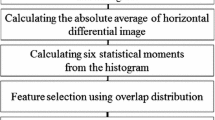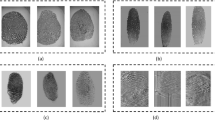Abstract
In the modern computerized biometric authentication system, a fingerprint spoof detector is utilized to differentiate the real and fake human finger. The efficiency of spoof detectors will be enhanced by introducing more number of testing and training set of images. When the spoof detector is exposed to bogus images that are not part of the training set, the performance of any such spoof detector will degrade. To address the security threat posed by new spoof attacks, this paper proposes a Weibull-calibrated SVM (W-SVM) approach for recognizing the robustness in the new material used in spoof generation detection and a method to detect how the interoperability across the classifiers gets automatically adapted to new spoof materials. Experiments have been conducted with new segments of the database, which are built for spoofs composed of new materials and later evaluated with existing spoof detectors. It was discovered that while testing with the existing method, the rate of error increases; however, when the recommended adaptive approach was used, the spoof detection and performance gets improved significantly.
Access this chapter
Tax calculation will be finalised at checkout
Purchases are for personal use only
Similar content being viewed by others
References
Mura V, Ghiani L, Marcialis GL, Roli F, Yambay DA, Schuckers SA (2015) LivDet 2015 fingerprint liveness detection competition 2015. In: 2015 IEEE 7th international conference on biometric theory, applications and systems (BTAS), pp 1–6
Fumera G, Marcialis GL, Roli F, Biggio B, Akhtar Z (2012) Biometric authentication solutions are tested for security under real-world spoofing attacks. IET Biometrics 1(1):11–24
Bengio Y (2009) Deep architectures for AI learning
Pinto N, Cox D (2011) Beyond simple features: a large-scale feature search approach to unconstrained face recognition. In: 2011 IEEE international conference on automatic face and gesture recognition and workshops (FG 2011), IEEE
Verdoliva L, Gragnaniello D, Poggi G, Sansone C (2013) Fingerprint liveness detection based on weber local image descriptor. In: 2013 IEEE workshop on biometric measurements and systems for security and medical applications (BIOMS), IEEE, pp 46–50
Ghodsi A (2006) A short tutorial on dimensionality reduction, vol 37, no. 38. Department of Statistics and Actuarial Science, University of Waterloo, Ontario, Canada
Chang CC, Lin CJ (2011) LIBSVM: a library for support vector machines. ACM Trans Intell Syst Technol 2:1–27
Marcialis GL, Coli P, Roli F (2007) Fingerprint vitality detection using the power spectrum. In: Proceedings of IEEE international workshop on automatic identification advanced technologies autoID, Alghero, Italy, pp 169–173
Chang S, Liu C, Niu B, Tang M, Zhou Z, Huang Q (2015) An evaluation of fake fingerprint databases utilizing SVM classification. Pattern Recogn Lett 60(1):1–7
de Alencar Lotufo R, Nogueira RF, Machado RC (2014) Evaluating software-based fingerprint liveness detection using convolutional networks and local binary patterns to evaluate software-based fingerprint liveness detection. In: Proceedings of the 2014 IEEE workshop on biometric measurements and systems for security and medical applications (BIOMS), IEEE, pp 22–29
Rahtu E, Kannala J (2012) Bsif: binarized statistical image features. In: Proceedings of the 21st international conference on pattern recognition (ICPR2012), IEEE, pp 1363–1366
Matsumoto T, Matsumoto H, Yamada K, Hoshino S (2002) Impact of artificial “gummy” fingers on fingerprint systems. In: Optical security and counterfeit deterrence techniques IV, pp 275–289
Arora SS, Cao K, Jain AK, Paulter NG (2013) 3D fingerprint phantoms. Department of Computer Science and Engineering, Michigan State University, East Lansing, Technical paper
Coles S (2001) Statistical modeling of extreme values: an overview. Springer
Author information
Authors and Affiliations
Corresponding author
Editor information
Editors and Affiliations
Rights and permissions
Copyright information
© 2023 The Author(s), under exclusive license to Springer Nature Singapore Pte Ltd.
About this paper
Cite this paper
Kanmani Pappa, C., Kavitha, T., Rama Krishna, I., Venkata Lokesh, V., Narayana, A.V.L. (2023). Generalization of Fingerprint Spoof Detector. In: Jacob, I.J., Kolandapalayam Shanmugam, S., Izonin, I. (eds) Data Intelligence and Cognitive Informatics. Algorithms for Intelligent Systems. Springer, Singapore. https://doi.org/10.1007/978-981-19-6004-8_14
Download citation
DOI: https://doi.org/10.1007/978-981-19-6004-8_14
Published:
Publisher Name: Springer, Singapore
Print ISBN: 978-981-19-6003-1
Online ISBN: 978-981-19-6004-8
eBook Packages: Intelligent Technologies and RoboticsIntelligent Technologies and Robotics (R0)




